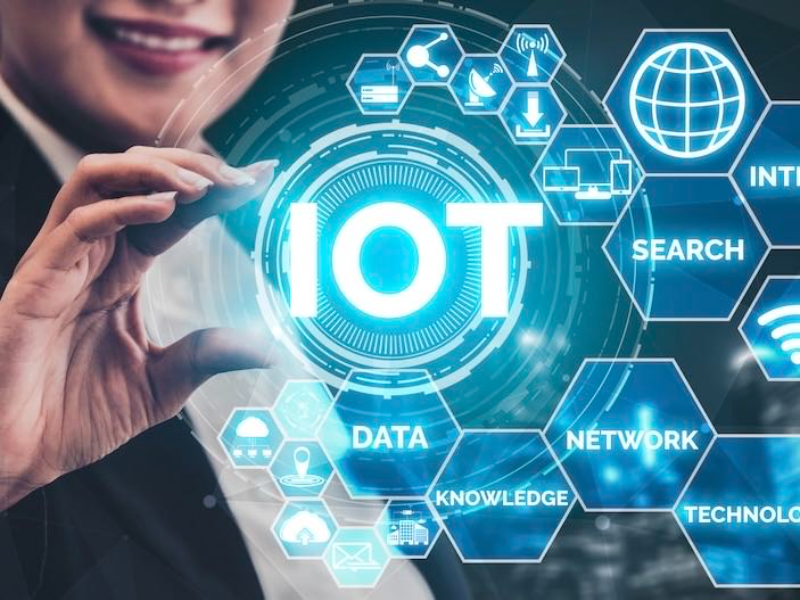- The Internet of Things (IoT) has emerged as a transformative force, revolutionising how we interact with technology and the physical environment around us.
- At the heart of this technological revolution lies the seamless integration and analysis of vast amounts of IoT-generated data.
- Realising the full potential of IoT data integration requires a strategic approach, proactive investments, and a commitment to continuous innovation.
As we enter the next phase of the digital revolution, IoT data integration will be crucial in shaping our future. By leveraging interconnected devices and data-driven insights, organisations can unlock new opportunities, enhance efficiencies, and deliver transformative experiences.
To fully realise the potential of IoT data integration, a strategic approach, proactive investments, and a commitment to continuous innovation are essential. Overcoming challenges, fostering collaboration, and embracing a data-driven culture will enable organisations to build a smarter, more connected future powered by IoT data integration.
Also read: IoT devices and the cloud: 5 steps to connect
Understanding IoT data integration
At its core, IoT data integration involves the aggregation, processing, and analysis of data collected from a multitude of interconnected devices. These devices, equipped with sensors and communication capabilities, generate a continuous stream of data, ranging from temperature readings and location information to machine diagnostics and user interactions.
The key challenge lies in making sense of this deluge of data, which often comes in disparate formats and from diverse sources. IoT data integration addresses this challenge by harmonising and consolidating data from various devices and systems, regardless of their underlying protocols or standards. By breaking down data silos and fostering interoperability, organisations can unlock valuable insights and derive actionable intelligence from their IoT deployments.
The value proposition of IoT data integration
1. Real-time decision-making
By integrating IoT data in real-time, organisations can gain instant visibility into operations and respond swiftly to changing conditions. Whether it’s optimising production processes, managing supply chains, or enhancing customer experiences, timely insights enable informed decision-making and better outcomes.
2. Improved efficiency and productivity
IoT data integration enables organisations to identify inefficiencies, streamline workflows, and optimise resource allocation. From predictive maintenance and asset tracking to energy management and logistics optimisation, businesses can drive operational efficiencies and maximise productivity across the board.
3. Enhanced customer experiences
By leveraging IoT data, organisations can personalise products and services, anticipate customer needs, and deliver seamless experiences. Whether it’s smart home devices that adapt to user preferences or personalised recommendations based on IoT-generated insights, customer-centric innovations are redefining engagement and loyalty.
4. Innovative business models
IoT data integration opens new revenue streams and business models, empowering organisations to monetise data-driven insights. From subscription-based services and pay-per-use models to outcome-based pricing and data marketplaces, businesses can capitalise on the value of their IoT data and drive sustainable growth.
Also read: Wireless Logic and Blue Wireless partners with Starlink for IoT
Overcoming challenges and ensuring success
While the potential benefits of IoT data integration are compelling, organisations must navigate several challenges to realise its full potential.
1. Data security and privacy
With the proliferation of connected devices, ensuring the security and privacy of IoT data is paramount. Organisations m
ust implement robust cybersecurity measures, adhere to data protection regulations, and prioritise data governance to safeguard sensitive information and maintain trust with stakeholders.
2. Scalability and interoperability
As IoT ecosystems continue to expand, scalability and interoperability become critical considerations. Organisations must architect flexible and scalable data integration solutions that can accommodate growth and seamlessly integrate with existing systems and technologies.
3. Data quality and governance
Maintaining data quality and integrity is essential for deriving meaningful insights from IoT data. Organisations must establish data governance frameworks, implement data validation and cleansing processes, and foster a culture of data-driven decision-making to ensure the accuracy and reliability of their insights.
4. Skills and talent
Harnessing the power of IoT data integration requires skilled talent with expertise in data science, analytics, and IoT technologies. Organisations must invest in training and development initiatives to build a workforce capable of extracting value from IoT data and driving innovation.

